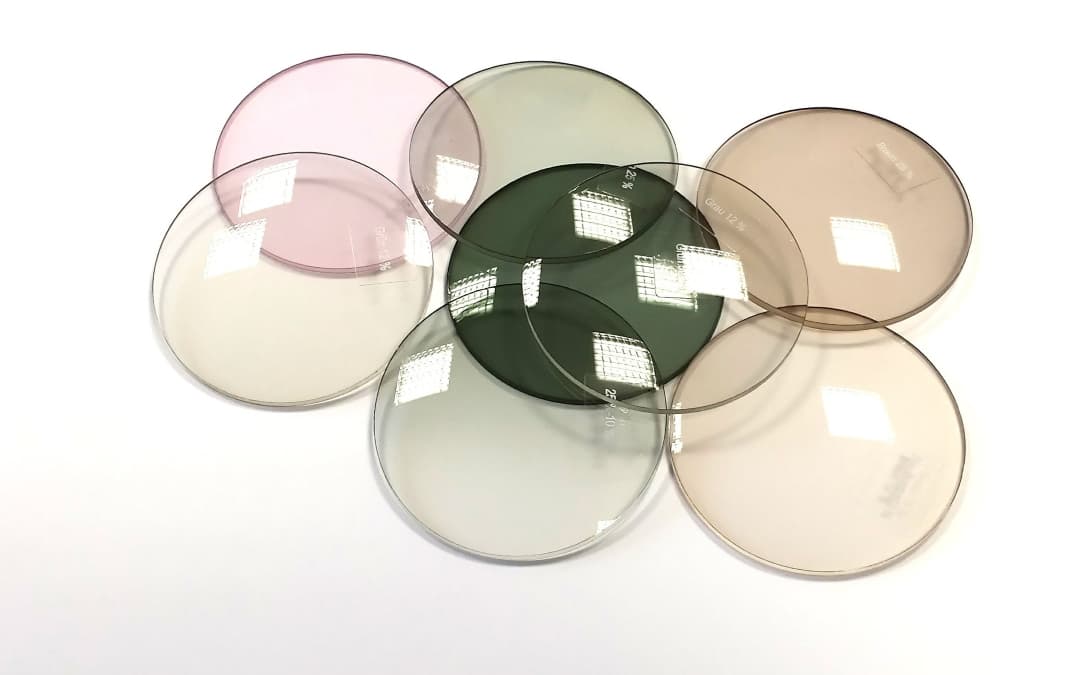The glasses must ensure the best possible vision and several factors affect their choice: the visual defect, the size and shape of the frame, the type of activity, work or use that you intend to do with that glass. Important elements in determining the thickness and weight of the lenses and therefore the final result.
For example, when the visual defect is high, it is advisable to choose a smaller frame, which allows you to use thinner lenses. In fact, if the thickness increases, as often happens with increasing dioptric power, increase the weight and distortions that the lens can create.
There are numerous materials for building ophthalmic lenses (eyeglass lenses) that allow different results and thicknesses. These materials can be divided into two broad categories: mineral glass and plastic/organic material.
Mineral glass lenses
The mineral glass lenses are divided into:
- Crown glass lenses 1.5 and 1.6
- Titanium lenses 1.7
- lanthanum lenses 1.8 and 1.9
Crown 1.5 glass lenses are, among those in mineral glass, the most commonly used for the clearing of short-sightedness and hyperometer light. This material has excellent optical properties, such as low color dispersion and high transparency that can be further enhanced by the application of an anti-reflective treatment, in order to minimize reflections. It is available in coloured or photochromic colours and has the fragility of glass.
Crown 1.6 glass lenses are used to compensate for short-sightedness and light and medium hyperopia. This material has the same characteristics as the crown 1.5 except the refraction index which is slightly higher. As a result, the thickness will be slightly lower for the other conditions.
Titanium 1.7 lenses are best suited for medium, high and very high myopia. Compared to crown glass, it has greater chromatic dispersion, greater reflection on surfaces and greater fragility, as well as significantly higher weight. The value of titanium lenses is the reduced thickness at the edge. Like all glass lenses, titanium glass is colourable and anti-reflective treatment is recommended.
The lenses at lanthanum 1.8 and the lenses at lanthanum 1.9 are indicated in the high and very high short-sightedness. They have 1.7 titanium-like properties, accentuating all titanium defects, and with the sole benefit of a greater reduction in thickness due to the higher refraction index.
Organic material lenses
With organic or plastic material you can obtain lenses as thin as or even thinner than titanium, with the great advantage of unbreakability and a significant reduction in weight. The downside of organic materials in general is poor resistance to abrasions, a defect that has been mitigated by new hardening treatments applied to surfaces, including in mating to multilayer anti-reflective treatment and another treatment that makes it easier to clean. However, it is advisable to be very careful in cleaning the organic lenses, absolutely avoiding rubbing the surfaces if they have not been thoroughly washed with running water beforehand, in order to remove any abrasive particles.
Among the lenses made of organic material are:
- polycarbonate lenses
- Trivex lenses
Polycarbonate lenses are appreciated for their lightness and subtlety, and for their natural UV protection property. Polycarbonate was born as a synthetic material for the aerospace industry and is resistant to breakage and splintering. For the added safety they provide, the lenses in this material are recommended for children and teens, for athletes, and for all those who carry out activities or heavy work.
The lenses in Trivex are light and have excellent optical characteristics. An ideal alternative to polycarbonate, they offer lightness, sharpness of vision and great resistance. They are resistant to the action of chemical agents, do not tend to yellow and are extremely easy to clean. For this they are suitable for sports glasses, for children, the elderly and work glasses.
Trivex lenses are also particularly suitable for mounting day glasses or glasants, which are characterized by the fact that the only supports that support the lenses are small pins placed at the end of the lenses, both nasal and temples.

